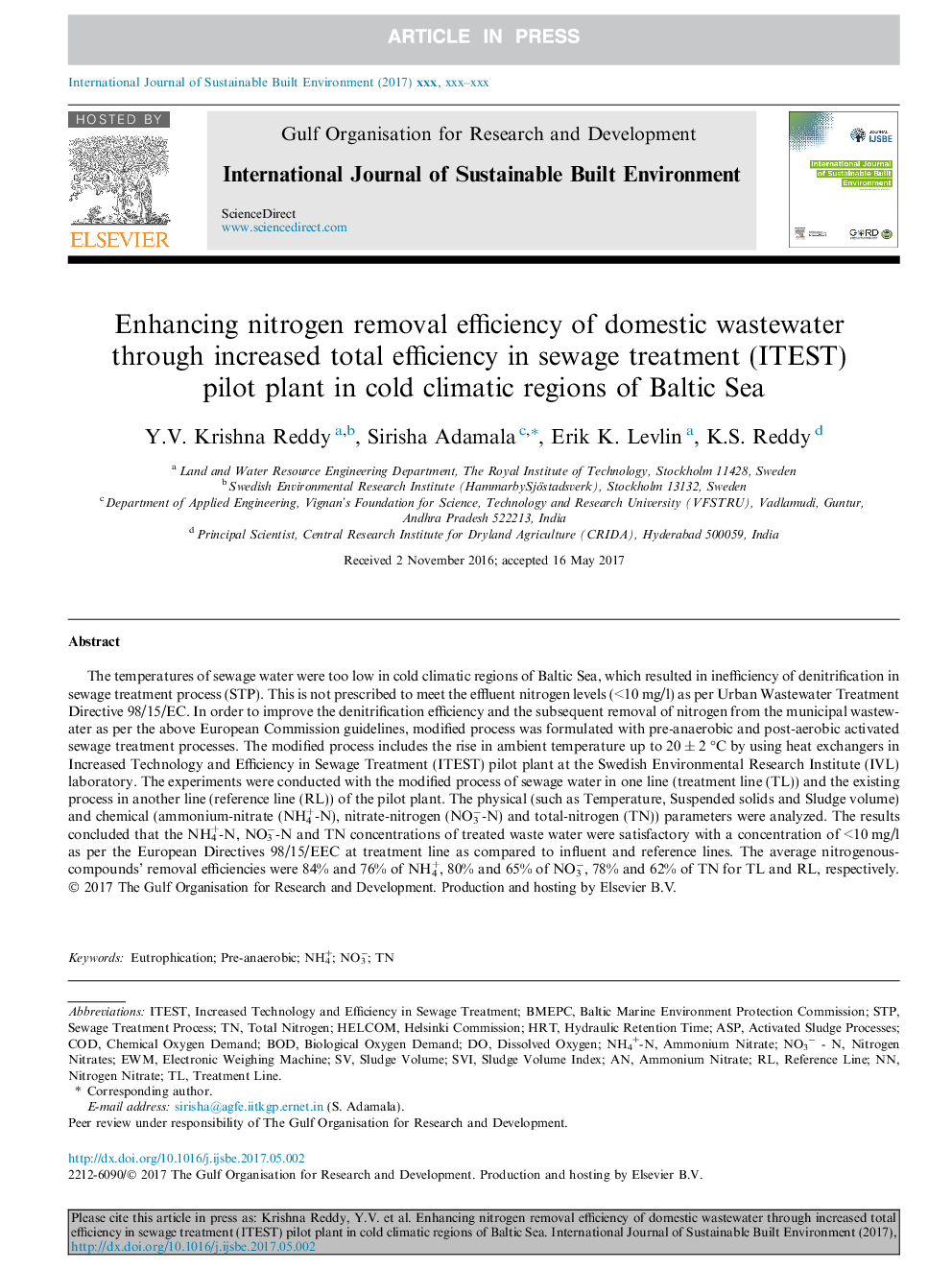| Article ID | Journal | Published Year | Pages | File Type |
|---|---|---|---|---|
| 6659490 | International Journal of Sustainable Built Environment | 2017 | 8 Pages |
Abstract
The temperatures of sewage water were too low in cold climatic regions of Baltic Sea, which resulted in inefficiency of denitrification in sewage treatment process (STP). This is not prescribed to meet the effluent nitrogen levels (<10 mg/l) as per Urban Wastewater Treatment Directive 98/15/EC. In order to improve the denitrification efficiency and the subsequent removal of nitrogen from the municipal wastewater as per the above European Commission guidelines, modified process was formulated with pre-anaerobic and post-aerobic activated sewage treatment processes. The modified process includes the rise in ambient temperature up to 20 ± 2 °C by using heat exchangers in Increased Technology and Efficiency in Sewage Treatment (ITEST) pilot plant at the Swedish Environmental Research Institute (IVL) laboratory. The experiments were conducted with the modified process of sewage water in one line (treatment line (TL)) and the existing process in another line (reference line (RL)) of the pilot plant. The physical (such as Temperature, Suspended solids and Sludge volume) and chemical (ammonium-nitrate (NH4+-N), nitrate-nitrogen (NO3â-N) and total-nitrogen (TN)) parameters were analyzed. The results concluded that the NH4+-N, NO3â-N and TN concentrations of treated waste water were satisfactory with a concentration of <10 mg/l as per the European Directives 98/15/EEC at treatment line as compared to influent and reference lines. The average nitrogenous-compounds' removal efficiencies were 84% and 76% of NH4+, 80% and 65% of NO3â, 78% and 62% of TN for TL and RL, respectively.
Keywords
Related Topics
Physical Sciences and Engineering
Chemical Engineering
Chemical Engineering (General)
Authors
Y.V. Krishna Reddy, Sirisha Adamala, Erik K. Levlin, K.S. Reddy,
